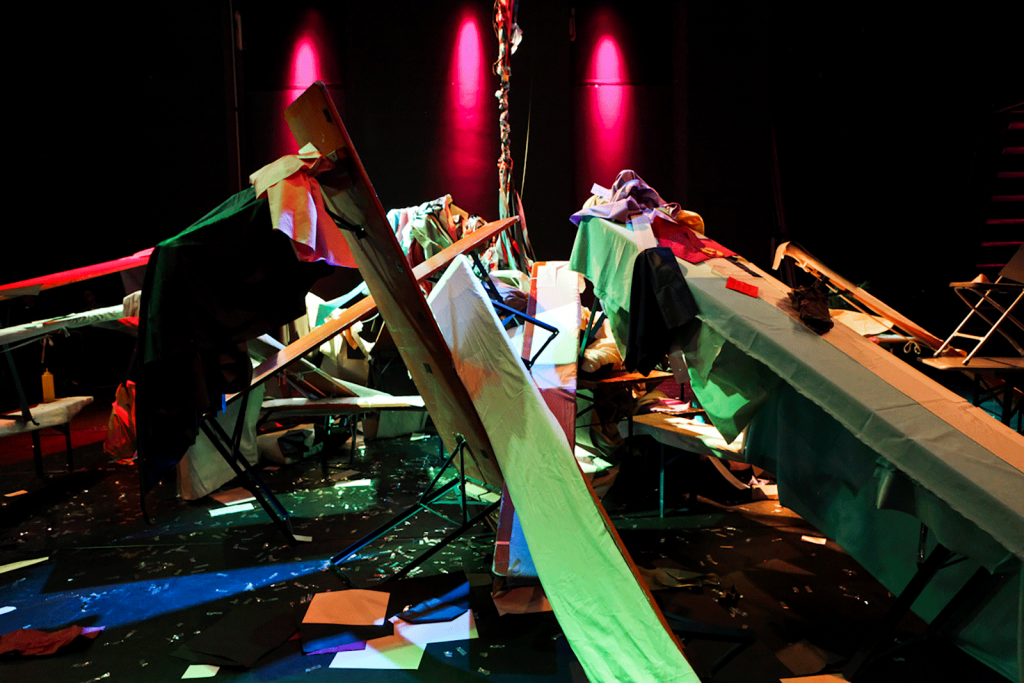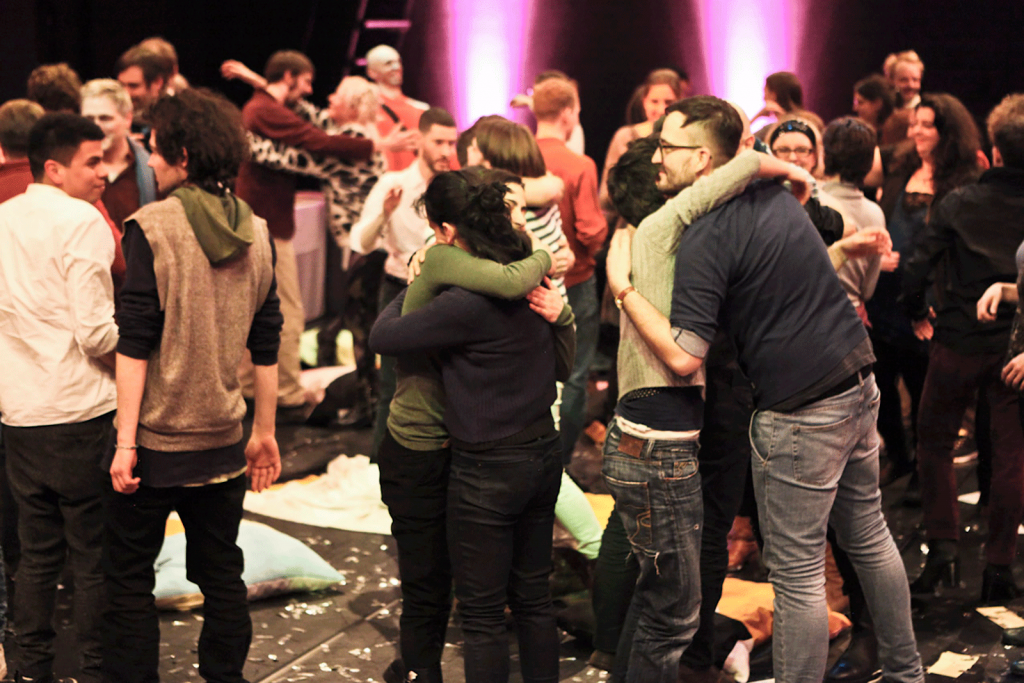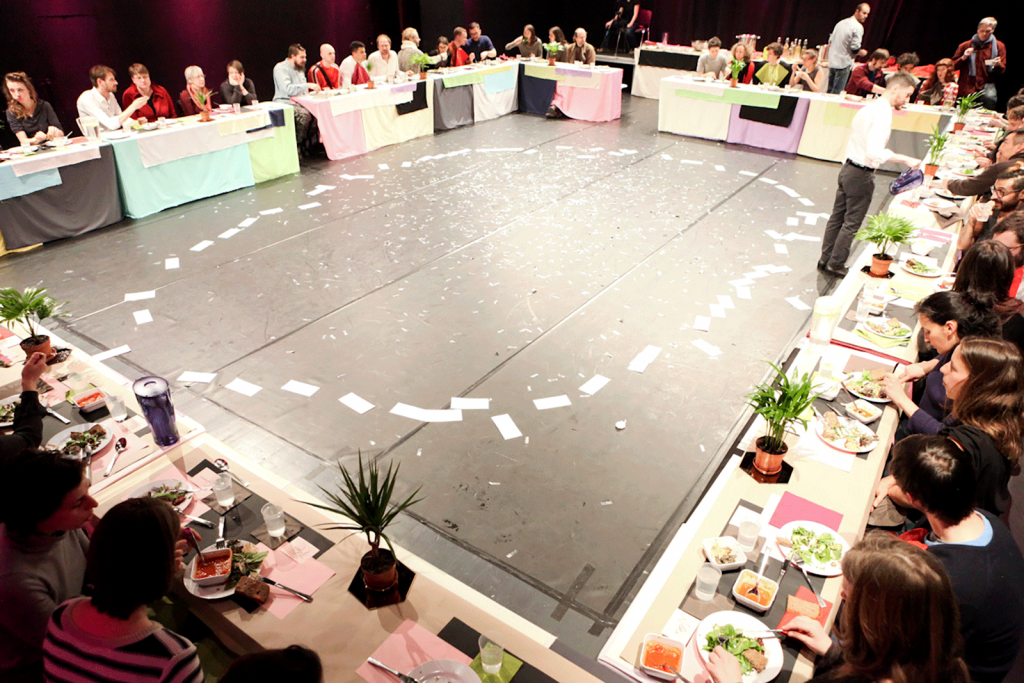Common Prayer
What Can We Do Together That We Can’t Do Alone?
description
Guest Professorship (5 months), Akademie der Bildenden Künste München — 2013/14
Invited by Prof. Kerstin Stakemeier
Across five months I led a studio seminar that treated the classroom as a social laboratory for collective composition, ecstatic communion, and counterpublic-making. Students worked around the question of “what does leaderless togetherness look like,” and built choreographic scores to pose to audiences asking audiences in turn to pose as ensembles where call and response layered requests, prompts, and stories converged to produce sound, movement, and play while maintaining individual agency inside mass formations. In this line of inquiry, Common Prayer investigates how group experiences oscillate between subordination and liberation, and how we can stage forms of togetherness that refuse both paternalism and esoteric control.
Aims & Questions
Together Forever Research With Munich Students
The research in Munich turned a whole bunch of visual artists into thorough performance makers who I follow to this day. The work culminated in participatory prototypes that informed Together Forever (HAU, Berlin 2014), a performance that toasted interdependence, framed care as method, and asked whether bodily investments in cooperation could challenge the social order. What followed Together Forever was none other than The Great Big Togetherness(Donau Festival, Austria 2014), a great big curatorial project at an amazing multidisciplinary arts festival in Krems, Austria and that project was nothing less than golden.
Invited by Prof. Kerstin Stakemeier
Across five months I led a studio seminar that treated the classroom as a social laboratory for collective composition, ecstatic communion, and counterpublic-making. Students worked around the question of “what does leaderless togetherness look like,” and built choreographic scores to pose to audiences asking audiences in turn to pose as ensembles where call and response layered requests, prompts, and stories converged to produce sound, movement, and play while maintaining individual agency inside mass formations. In this line of inquiry, Common Prayer investigates how group experiences oscillate between subordination and liberation, and how we can stage forms of togetherness that refuse both paternalism and esoteric control.
Aims & Questions
- What does leaderless togetherness look like?
- How can we choreograph publics, moving between “mess, mass, class, commune,” without collapsing difference into a single pattern?
- How do scores, props, and call and response architectures open a route to “ecstatic” attention while protecting choice and consent?
Together Forever Research With Munich Students
The research in Munich turned a whole bunch of visual artists into thorough performance makers who I follow to this day. The work culminated in participatory prototypes that informed Together Forever (HAU, Berlin 2014), a performance that toasted interdependence, framed care as method, and asked whether bodily investments in cooperation could challenge the social order. What followed Together Forever was none other than The Great Big Togetherness(Donau Festival, Austria 2014), a great big curatorial project at an amazing multidisciplinary arts festival in Krems, Austria and that project was nothing less than golden.




